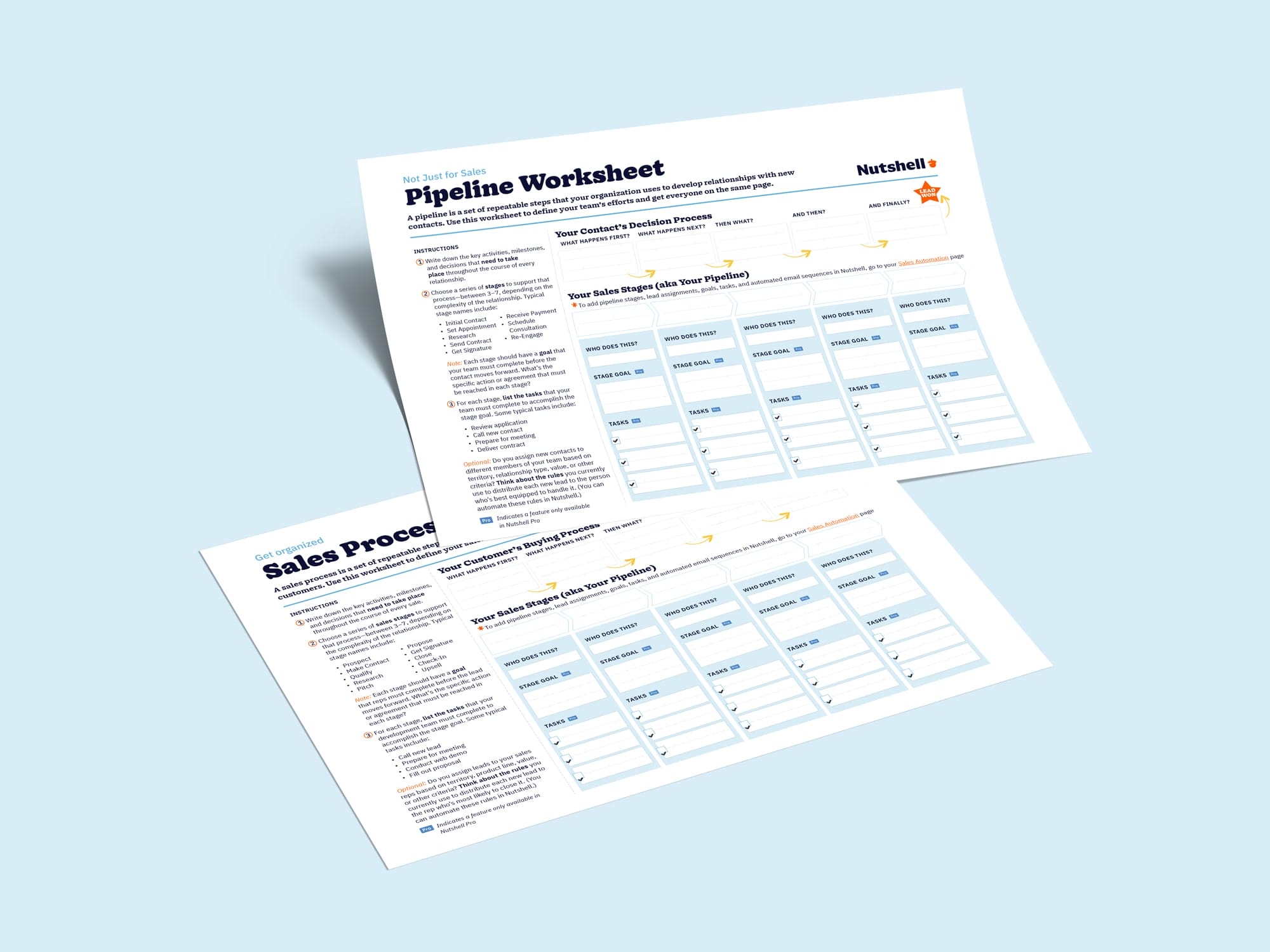
Sales accepted leads (SALs) are marketing qualified leads (MQLs) that have passed a formal sales review—meaning the sales team has officially accepted them based on agreed-upon criteria—and are now approved for further nurturing toward becoming sales qualified leads (SQLs).
If you’re in sales or marketing, you’ve likely heard of SALs. If not, you might be interested in understanding what SALs means and how it applies to your business.
Coordinating sales and marketing efforts is key to shaping the buyer’s journey from the top to the bottom of the sales funnel. The marketing team toils to capture marketing-qualified leads (MQLs)—leads the marketing team determines are likely to become customers—and hand them off to the sales force.
Sales is then responsible for vetting those MQLs to ensure they meet the requirements for sales accepted leads (SALs), nurturing them to become sales-qualified leads (SQLs), and finally converting them into customers.
But what are SALs, and what do SALs mean in business? SALs are MQLs that have been through a standardized lead acceptance procedure, meet the approved criteria for sales readiness, and are accepted by the sales team for nurturing.
In this post, we’ll discuss what SALs are, the benefits of qualifying MQLs as SALs, and the best criteria for a SAL. Let’s get started!
Join 30,000+ other sales and marketing professionals in signing up for our free Sell to Win newsletter!

A SAL is a sales accepted lead, and the meaning of SAL in business is tied to the lead qualification process from marketing to sales teams. SALs are MQLs accepted by the sales team after going through a formal lead acceptance process and meeting the established criteria for sales-readiness.
Most businesses design a lead acceptance procedure where the sales team must qualify MQLs as SALs before they’re approved as sales-ready. This process guarantees harmony between marketing and sales during the lead hand-off. Usually, this entails:
In most cases, SALs are vetted based on factors such as the nature of the lead’s position, the organization’s size, the type of industry they work in, and the availability and quality of lead data.
Summarize this content with AI:
With well-defined criteria for what constitutes a SAL, you can direct your sales team’s efforts to where they will provide the greatest return. As a result, you can be confident that the leads you send to sales are already familiar with your company and its products or services.
Furthermore, SALs can assist your teams in the following:
Simply put, SALs help you avoid endlessly walking about in search of your next client. They point the way to untapped sources of income that can help your company expand. When you take the time to cultivate your SALs, you open up a valuable channel for bringing in new clients.
This free worksheet will help you create a custom sales process for your business including pipeline stages, key activities for each stage, and more. Download it below.

We’ve already established that SALs aid in directing your sales team’s efforts into the areas that will yield the highest return on investment (ROI). However, not all prospects that express interest in your business qualify as SALs. How do you determine which leads warrant your sales team’s attention, then?
Well, many businesses employ the budget, authority, need, and timeframe (BANT) method to identify sales-ready prospects. Here’s how it works:
When everyone involved in the sales process uses the same definition of SAL, you can streamline your sales operations. Your sales team will be more productive if they pursue high-quality leads instead of a broad range of possible customers.
Qualifying MQLs as SALs can save time, effort, and resources by directing your sales and marketing efforts on leads that are more likely to convert into paying customers. It also allows you to fine-tune and expand your offering to more closely satisfy your niche market’s requirements.
But that’s not all. Take a look at a few other benefits of qualifying MQLs as SALs and what that means for your business:
We previously mentioned that synchronizing marketing and sales activities is vital to influencing the customer journey from the beginning to the end of the sales funnel and increasing revenue. By incorporating a SAL step into your sales process, you can ensure that your teams are on the same page regarding the lead qualification process and criteria.
Since the sales and marketing departments must be on the same page regarding lead scoring and qualification, most leads can sometimes stay within the MQL stage. A SAL step in the sales process facilitates the flow of leads and lessens the likelihood of losing a valuable prospect.
The marketing and sales departments typically have an SLA to guarantee a timely follow-up. When a lead is in SAL status, sales has 24 hours to contact them. As a result, incorporating a SAL step into your sales process can help tailor your follow-up effectively and promptly.
If your sales lead acceptance rate is lower than 90%, it’s evident there was some ambiguity between the sales and marketing departments. The SAL method will guide you through locating the problem’s source and rectifying it efficiently.
The Sell to Win Playbook collects 55 of the best expert sales tips we’ve ever published. Download it today!

Increasing the number of marketing qualified leads converted to sales accepted leads requires collaboration between sales and marketing teams. Together, they can improve your business’s SAL numbers by focusing on the following areas:
As a marketing or sales manager, you know that it’s essential that you track every lead meticulously so that you can monitor their progression through the sales funnel. However, without the proper equipment, this might be challenging. That’s where a customer relationship management (CRM) platform like Nutshell comes into play.
With Nutshell, you can automatically import leads and sort them into different buckets based on various criteria, such as whether they are MQLs, SALs, or SQLs. Sorting things out in this way will undoubtedly upgrade the quality of your work.
We don’t expect you to dive headfirst into our CRM without getting a feel for how it operates. That’s why we offer a no-risk, 14-day free trial of Nutshell for your convenience. Get started right away!
An MQL (Marketing Qualified Lead) shows interest through engagement like downloads or webinar attendance. A SAL (Sales Accepted Lead) is an MQL that sales has reviewed and accepted for follow-up. An SQL (Sales Qualified Lead) is a SAL that’s been contacted and confirmed as a genuine opportunity with budget, authority, need, and timeline.
Sales should review and accept or reject leads within 24-48 hours, with 24 hours being the best practice. Once accepted as a SAL, sales must follow up within 24-72 hours (24 hours is ideal). Quick response times prevent leads from going cold and demonstrate your commitment to the prospect.
A healthy SAL acceptance rate is 70-90%, with 90-95% being ideal. If your acceptance rate is below 70%, it typically indicates misalignment between sales and marketing on lead qualification criteria. Rates consistently above 95% might mean your MQL criteria is too strict, potentially missing opportunities.
The sales team—typically sales development reps (SDRs) or inside sales reps—reviews MQLs and decides whether to accept them as SALs. They verify the lead meets agreed-upon criteria, has accurate contact information, and fits your ideal customer profile before accepting responsibility for follow-up.
Rejected MQLs should be automatically routed back to marketing for further nurturing or correction. Sales should provide specific rejection reasons (incomplete data, wrong territory, doesn’t meet ICP) so marketing can refine qualification criteria. This feedback loop is essential for improving lead quality and maintaining alignment between teams.
Give our powerful, easy-to-use CRM a try for free for 14 days! Or join a live demo to see Nutshell at work!

Join 30,000+ other sales and marketing professionals. Subscribe to our Sell to Win newsletter!
